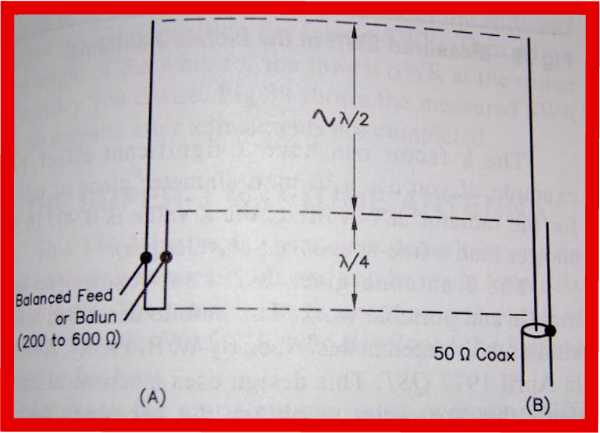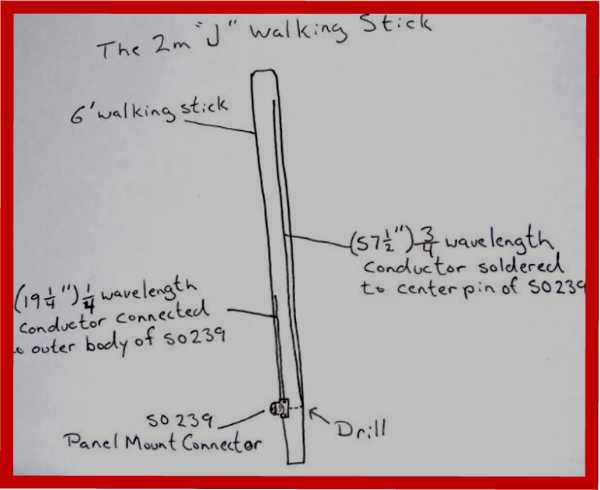The "J" Walking Stick
A 2m J-Pole Antenna in a Hiking Staff
By: John Hardin KI6DGX

I built this 2m J-Pole antenna into a walking stick as a companion to my HT while I'm hiking in the woods.
The walking stick gives me balance and stability on steep rugged terrain;
the J-pole gives my radio signal significant gain over a stock rubber duck.
The whole thing cost me $5 to make.
I started by cutting down and skinning a fir sapling.
From that I cut a staff about 6ft. long x 1-1/2 to 2 inches diameter.
After a little preliminary carving, I set it aside to dry in the sun.
Meanwhile, I found this diagram in the ARRL Antenna Book.

…and had this idea…

So, 1/4 wavelength at 144 Mhz is about 19-5/8 inches and 3x that is about 57-1/2.
Who has not got 7 feet of wire lying around the house somewhere ?
I found a short length of transformer wire and cut two pieces a little longer than the specified length, about 20 and 60 inches respectively.
I measured 60 inches down from the top of the stick to determine a good feed-point.
I did not want the long conductor to stick out at the top, but I wanted to keep the feed-point a little way off of the ground, about a foot in this case.
I drilled a hole at that spot, all of the way through the stick, big enough to stick the conductor through.
I enlarged one end of that hole until it was big enough to accommodate the SO-239 connector.
I shaved some material from around the hole, so that the connector laid flat against the stick.
I spent the $5 on the SO-239 connector, at Radio Shack here in G-ville.
I then threaded the long conductor through the small end of the hole, and soldered it to the center pin of the SO-239 connector.
I attached the short conductor to the body of the SO-239 connector by wrapping it tightly around one of the four mounting holes.
Then I put 4 small screws through the mounting holes to mount the connector to the stick, and to guarantee a good connection for the short conductor,
drove them into the wood and tightened them down.
Using a gouge, a knife and a hand drill, I carved slots in the wood to accommodate the conductors.
Wherever possible, I took advantage of natural splits in the wood.
I used the SHARC club's antenna analyzer to trim the length of the conductors until the antenna exhibited lowest SWR at about 146Mhz,
right in the middle of the 2m ham band.
I used a flathead screwdriver and a small hammer to tap the conductors into the slots.
Of course the next thing I did was to try it out.
I attached a coax cable and my 2m hand-held, held the staff above my head, keyed the mike and said my call sign.
I heard the squelch tail from the 146.79 repeater, about 15 miles away.
Sally, KG6FOL answered my call and gave me a 5-9 signal report. It worked!


I added handgrips that I made from some leather scraps. The handgrips lace on.
Do not use tacks, nails, or other conductive materials because they will adversely effect the performance of the antenna.
I added another piece of leather to protect the SO-239 connector.
Now let's go hiking !






